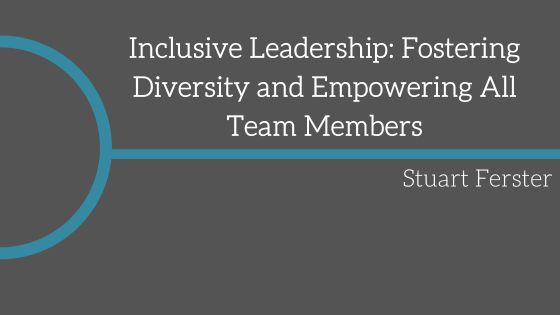In today’s diverse and globalized workforce, inclusive leadership has become critical for effective and ethical leadership. Inclusive leaders create an environment where all team members feel valued, respected, and empowered to contribute their unique perspectives and talents.
Understanding Inclusive Leadership
Inclusive leadership is a leadership style that goes beyond diversity and inclusion initiatives. It involves actively valuing and leveraging differences among team members to achieve better outcomes. An inclusive leader promotes a sense of belonging, equity, and psychological safety within the team.
The Importance of Inclusive Leadership
- Enhanced Innovation: Diverse teams are more innovative. Inclusive leaders encourage diverse perspectives, leading to creative solutions and fresh ideas.
- Better Decision-Making: Inclusive leadership fosters open dialogue and diverse viewpoints, leading to well-rounded decisions and reducing the risk of groupthink.
- Increased Engagement: When team members feel valued and included, they are more engaged, committed, and productive.
- Attracting and Retaining Talent: Inclusive organizations are more attractive to top talent. Inclusive leaders can help recruit and retain diverse talent.
Cultivating Inclusive Leadership
- Self-Awareness: Understand your own biases and cultural perspectives. Self-awareness is the first step in mitigating unconscious bias and promoting inclusivity.
- Active Listening: Actively listen to team members without judgment. Encourage open dialogue and create a safe space for sharing diverse opinions.
- Empathy: Develop empathy by trying to understand others’ experiences and perspectives. This helps you connect on a deeper level and appreciate individual differences.
- Promote Psychological Safety: Foster an environment where team members feel safe to express themselves without fear of reprisal.
- Leverage Diversity: Recognize that diverse teams are a source of strength. Encourage and value diverse perspectives and experiences.
- Fairness and Equity: Ensure fairness in opportunities, recognition, and rewards. Address any biases or inequities that may exist in your organization.
- Inclusive Decision-Making: Involve team members in decision-making processes. Seek input from different backgrounds and perspectives.
- Continuous Learning: Stay informed about cultural differences, unconscious bias, and inclusivity best practices. Commit to ongoing self-improvement.
Challenges in Inclusive Leadership
Inclusive leadership can face challenges, including:
- Inauthenticity: If inclusive leadership is perceived as a superficial or token effort, it can erode trust and engagement.
- Resistance to Change: Some team members may resist inclusive practices, viewing them as unnecessary or threatening the status quo.
- Lack of Awareness: Leaders may unintentionally perpetuate bias due to a lack of awareness or understanding.
In Conclusion
Inclusive leadership is a powerful tool for building strong, innovative, and engaged teams. It requires self-awareness, empathy, and a commitment to promoting diversity and equity. By fostering a culture of inclusivity, leaders can create a workplace where every team member feels valued, respected, and empowered to contribute their best. Inclusive leadership isn’t just a leadership style; it’s a fundamental component of ethical and effective leadership in today’s diverse world.

